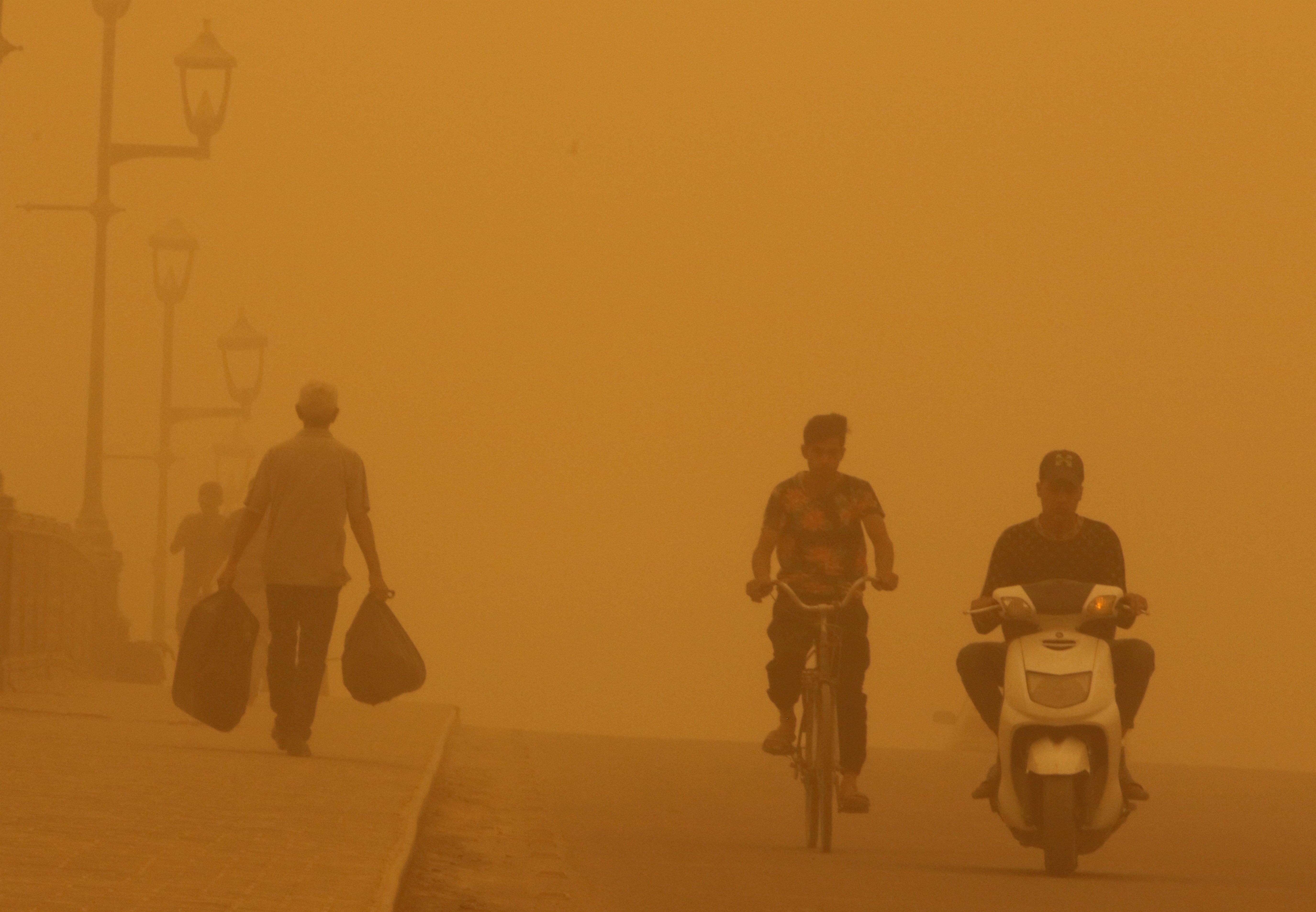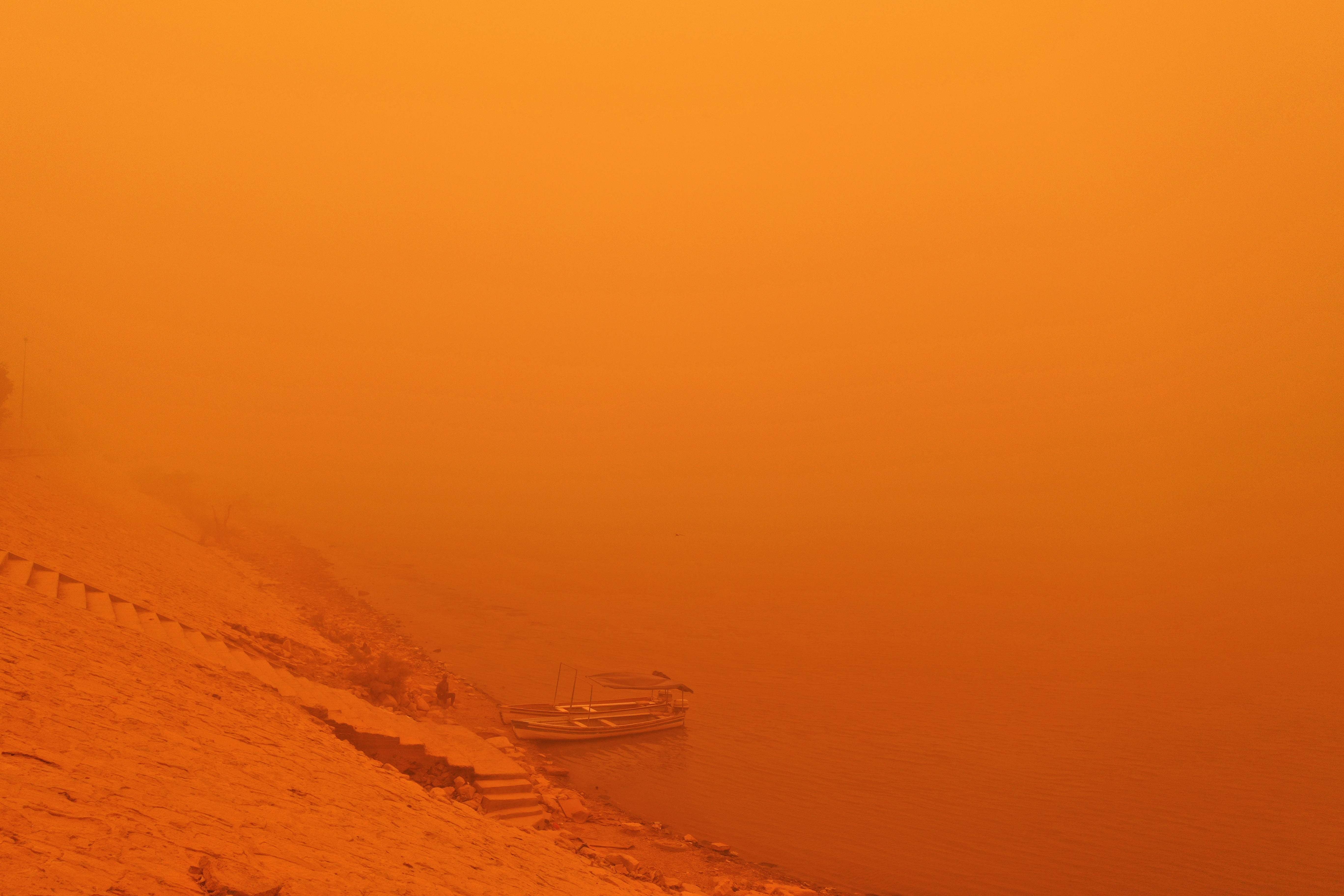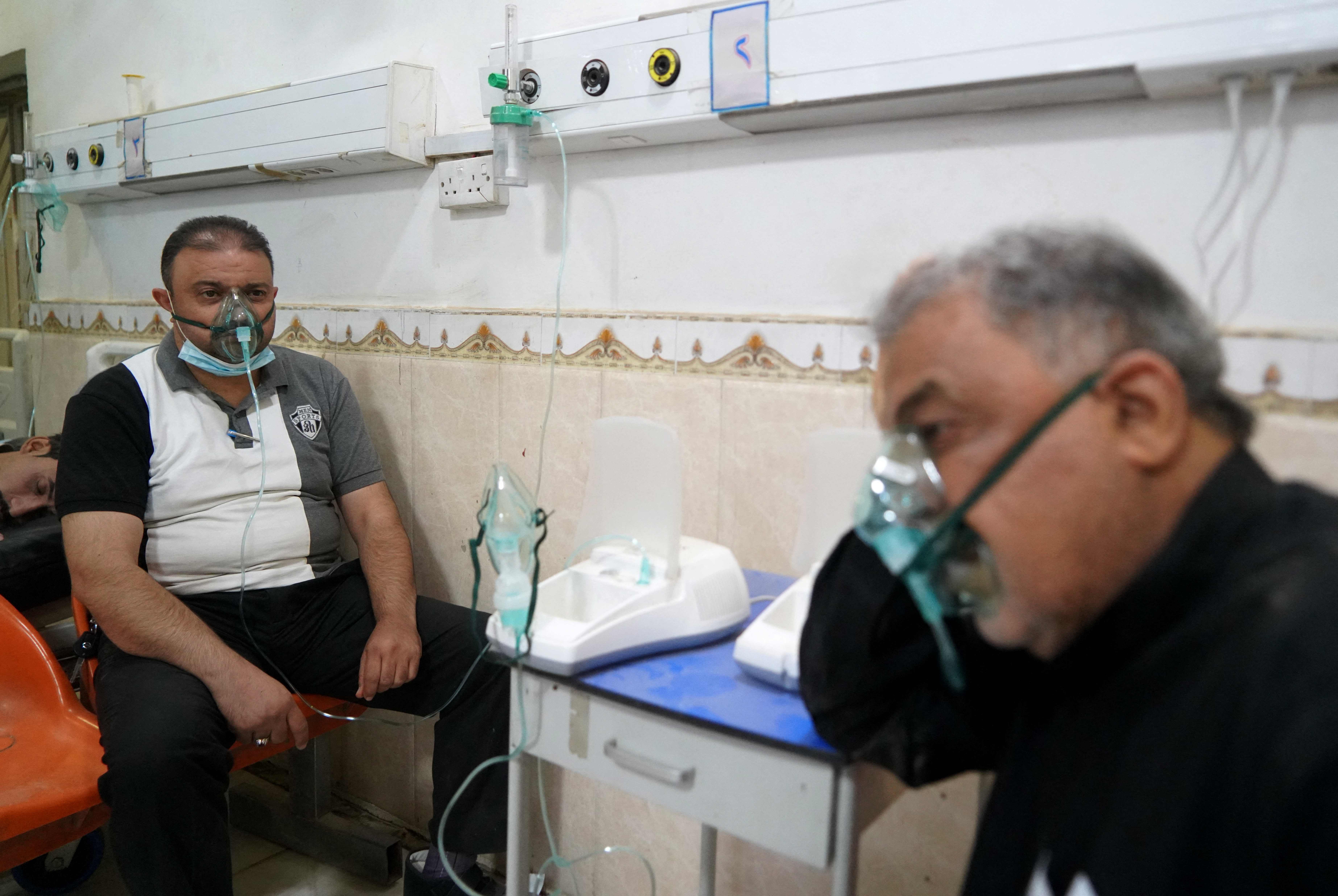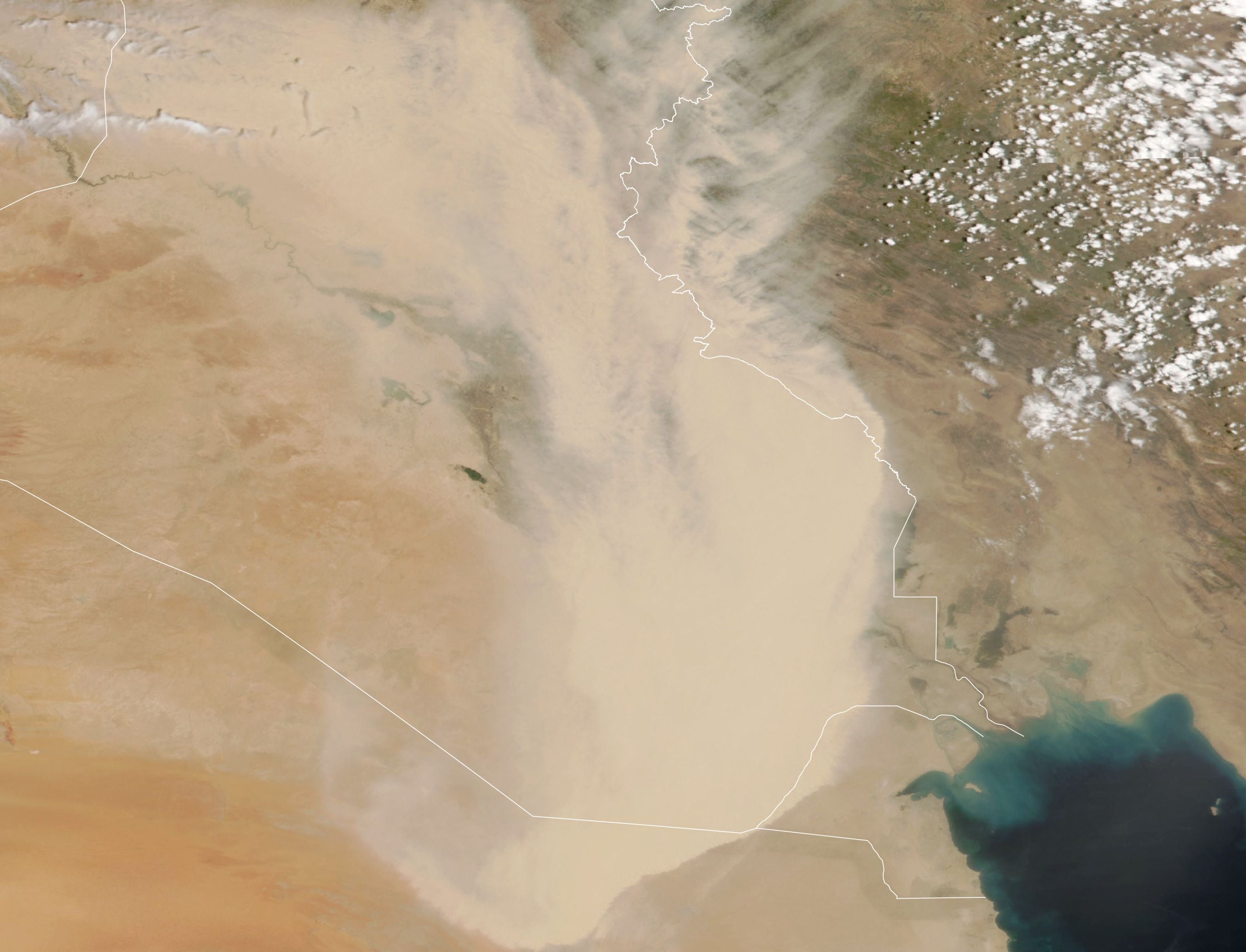Huge sandstorms sweep across Middle East, leading to closure of schools and government offices
Exact cause of sand and dust storms is not yet fully known
Sandstorms have engulfed several countries in the Middle East, leading to the closure of schools and government offices.
Blanketed with a thick layer of dust, several cities in Saudi Arabia, Bahrain, Iran and Iraq issued weather and traffic warnings as an orange hue enveloped them.
In the UAE, some cities recorded wind speeds of up to 40km, prompting authorities to issue a countrywide weather alert.
In Riyadh, drivers were warned to go slowly on highways as the Saudi capital observed a dramatic decline in visibility.
Up to 1,285 people in the city were sent to emergency hospital rooms after suffering from respiratory problems.
Neighbouring countries have been grappling with severe weather problems for more than a month now, as Iraq has experienced eight sand storms since mid-April.
Authorities ordered the closure of airports, schools and public offices across the country as the latest sandstorm hit the capital on Monday.




Up to 4,000 people were rushed to the hospital in Iraq after suffering from breathing problems.
Schools and government offices were also shut down in the Iranian capital of Tehran on Tuesday, as the city experienced a decline in air quality from the dust pollution. On Monday, airports in western Iran saw dozens of flights cancelled or delayed. This is the third severe sandstorm in Iran since mid-April.
In Syria, at least three people died along the border with Iraq because of the storm.
Though the exact cause of the sand and dust storms is not yet fully known, experts blame the frequency and intensity of the storms on overgrazing and deforestation. And they fear the phenomenon could only worsen as the climate crisis increasingly impacts regional weather patterns.
Additional reporting from the wires
Join our commenting forum
Join thought-provoking conversations, follow other Independent readers and see their replies
Comments
Bookmark popover
Removed from bookmarks